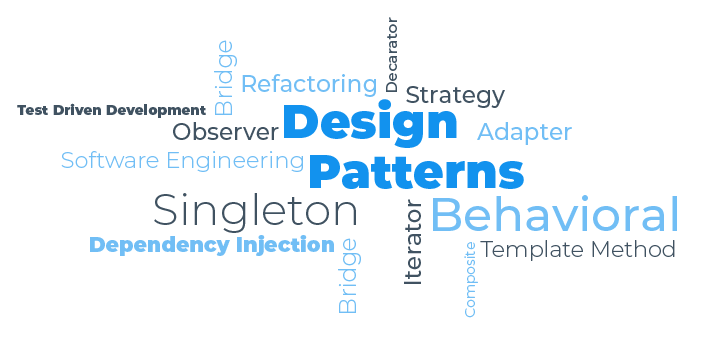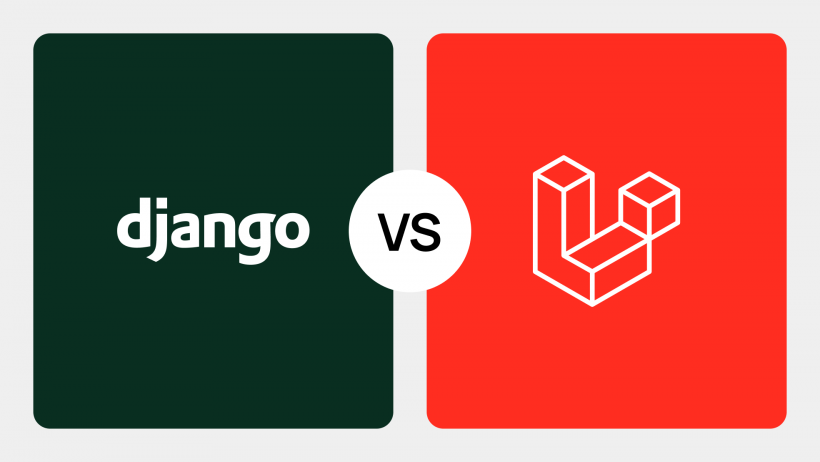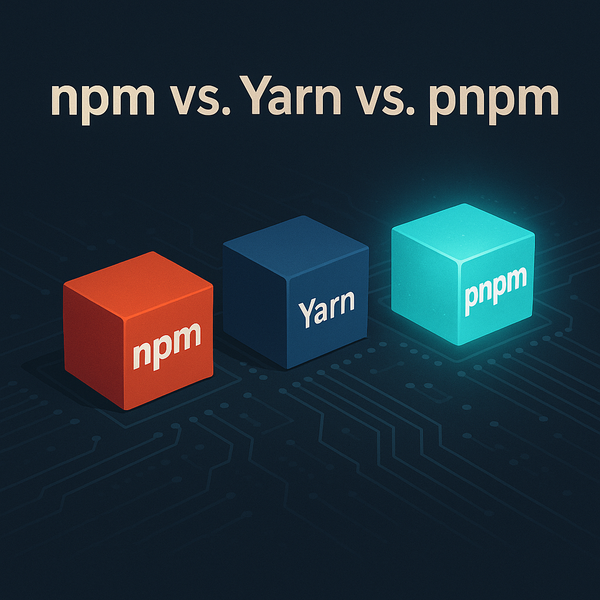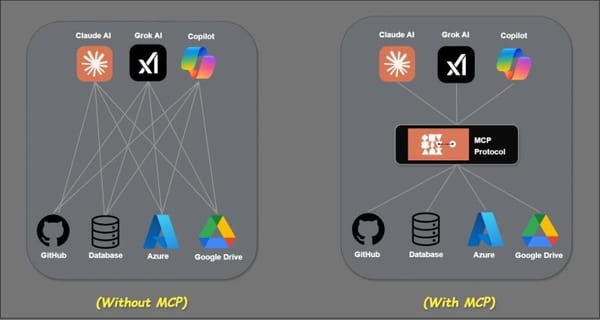The best Front-End Design Patterns

Design patterns are reusable solutions for common problems in software development. They are guidelines, not fixed rules, allowing flexibility in various contexts. Design patterns play a crucial role in front-end development by providing standardized solutions to recurring problems. These patterns not only enhance code organization and maintainability but also contribute to scalable and efficient web applications. Front-end developers can leverage these design patterns to address challenges such as managing state, handling user interactions, and structuring the application logic. From the modular Module Pattern to the flexible MVVM (Model-View-ViewModel) architecture, understanding and applying these patterns can significantly improve the structure and performance of front-end codebases.
Why use design patterns for front-end development?
Using design patterns for front-end development can help you achieve several benefits, such as maintainability, scalability, reusability, and performance. Design patterns can assist in writing modular and consistent code that is easy to read, debug, and update. They can also help you handle the growing complexity and functionality of your web application, as well as the increasing number of users and data. Moreover, design patterns can enable you to reuse existing code that has been tested and proven to work, while optimizing your code for speed, efficiency, and responsiveness. This can help you avoid common pitfalls and errors.
Here are some commonly used design patterns for front-end development:
1. Module Pattern:
- Organizes code into modular and encapsulated units.
- Uses closure to create private and public members.
The Module Pattern in JavaScript is a design pattern that leverages the use of closures to create encapsulation and organization within your code. It allows you to define private and public members within a module, preventing direct access to the internal state from outside the module. Here's a breakdown of the typical structure of the Module Pattern:
var MyModule = (function() {
// Private variable
var privateVar = 'I am private!';
// Private function
function privateFunction() {
console.log('This is a private function.');
}
// Public interface
return {
// Public variable
publicVar: 'I am public!',
// Public function
publicFunction: function() {
console.log('This is a public function.');
// Accessing private members within the module
console.log('Private Variable:', privateVar);
privateFunction();
}
};
})();
// Example usage
console.log(MyModule.publicVar); // Output: I am public!
MyModule.publicFunction(); // Output: This is a public function. \n Private Variable: I am private! \n This is a private function.
console.log(MyModule.privateVar); // Output: undefined (since privateVar is not accessible outside the module)
MyModule.privateFunction(); // Output: TypeError (since privateFun
In this example, MyModule is an immediately-invoked function expression (IIFE) that returns an object containing both public and private members. The private variables (privateVar) and functions (privateFunction) are not directly accessible from outside the module, providing encapsulation. The public members (publicVar and publicFunction) can be accessed and used by other parts of your code.
2. Singleton Pattern:
- Ensures that a class has only one instance and provides a global point of access to it.
- Useful for managing global state or configuration.
The Singleton Pattern is a design pattern that ensures a class has only one instance and provides a global point of access to that instance. It is useful when you want to control access to a shared resource, manage a global state, or coordinate actions across the system. Here's a basic example of implementing the Singleton Pattern in JavaScript:
var Singleton = (function() {
// Private instance variable
var instance;
// Private constructor
function SingletonConstructor() {
// Private variables and functions
var privateVariable = 'I am a private variable!';
function privateFunction() {
console.log('This is a private function.');
}
// Public interface
return {
// Public variable
publicVariable: 'I am a public variable!',
// Public function
publicFunction: function() {
console.log('This is a public function.');
console.log(privateVariable);
privateFunction();
}
};
}
// Public method to create or retrieve the singleton instance
return {
getInstance: function() {
if (!instance) {
instance = new SingletonConstructor();
}
return instance;
}
};
})();
// Example usage
var singletonInstance1 = Singleton.getInstance();
var singletonInstance2 = Singleton.getInstance();
console.log(singletonInstance1 === singletonInstance2); // Output: true (both variables reference the same instance)
singletonInstance1.publicFunction(); // Output: This is a public function
In this example:
- The Singleton pattern uses an immediately-invoked function expression (
IIFE) to create a closure, ensuring that the inner details are hidden from the global scope. - The (
singletonconstructor) function serves as the private constructor for the Singleton. - The (instance) variable holds the single instance of the Singleton.
- The public method (
getInstance) is used to get the singleton instance. If an instance doesn't exist, it creates one; otherwise, it returns the existing instance. - The public interface of the Singleton, containing public variables and functions, is accessible through the returned object.
This pattern ensures that there is only one instance of the (SingletonConstructor), and subsequent calls to (getInstance) will return the same instance. It's worth noting that while the Singleton Pattern can be useful, it should be used judiciously as it introduces global state, which can make code harder to test and reason about.
3. Observer Pattern:
- Defines a one-to-many dependency between objects so that when one object changes state, all its dependents are notified and updated automatically.
- Useful for implementing event handling systems.
The Observer Pattern is a behavioral design pattern where an object, known as the subject, maintains a list of dependents, known as observers, that are notified of any changes in the subject's state. This pattern is commonly used for implementing distributed event handling systems. Here's an example of the Observer Pattern in JavaScript:
// Subject
function Subject() {
this.observers = [];
this.addObserver = function(observer) {
this.observers.push(observer);
};
this.removeObserver = function(observer) {
this.observers = this.observers.filter(o => o !== observer);
};
this.notifyObservers = function() {
this.observers.forEach(observer => observer.update());
};
}
// Observer
function Observer(name) {
this.name = name;
this.update = function() {
console.log(`${this.name} received an update.`);
};
}
// Example usage
const subject = new Subject();
const observer1 = new Observer('Observer 1');
const observer2 = new Observer('Observer 2');
subject.addObserver(observer1);
subject.addObserver(observer2);
subject.notifyObservers();
// Output:
// Observer 1 received an update.
// Observer 2 received an update.
subject.removeObserver(observer1);
subject.notifyObservers();
// Output:
// Observer 2 received an update.
In this example:
- The Subject maintains a list of observers and provides methods to add, remove, and notify observers.
- The Observer has an update method, which is called when the subject notifies observers of a change.
- Observers can be added to the subject using
addObserverand removed usingremoveObserver. - When the
notifyObserversmethod is called on the subject, all registered observers are notified, and their update methods are invoked.
This pattern decouples the subject and its observers, allowing for a more flexible and maintainable design. It is commonly used in user interface development for handling events, where multiple components may need to respond to changes in the application state.
4. MVC (Model-View-Controller):
- Separates concerns by dividing the application into three interconnected components: Model (data and business logic), View (user interface), and Controller (handles user input and updates the model and view).
- Improves code organization and maintainability.
The Model-View-Controller (MVC) pattern is a software architectural pattern commonly used in designing and developing user interfaces. It divides an application into three interconnected components, each with distinct responsibilities, to achieve separation of concerns and promote a modular and maintainable codebase. The three main components of MVC are:
- Model:
- Represents the application's data and business logic.
- Maintains the state and behavior of the application.
- Responds to requests for information from the View and updates its state accordingly.
- Notifies registered observers (usually the Controller) about changes in its state.
- View:
- Represents the user interface (UI) and presentation layer.
- Displays data from the Model to the user and sends user input to the Controller.
- Does not contain application logic; it is responsible for presenting data and receiving user input.
- Can observe the Model and update its presentation when the Model changes.
- Controller:
- Acts as an intermediary between the Model and the View.
- Handles user input and updates the Model accordingly.
- Listens to user actions in the View and initiates the appropriate actions on the Model.
- Updates the View when the Model changes.
The key principles of MVC are:
- Separation of Concerns: Each component (Model, View, Controller) has a distinct responsibility, which makes the code more modular and easier to maintain.
- Modularity: Changes to one component do not necessarily affect the others. For example, you can update the View without changing the Model or Controller.
- Flexibility: Different Views can be associated with the same Model, and vice versa. Similarly, different Controllers can interact with the same Model or View.
Here's a simple JavaScript example illustrating the basic concepts of MVC:
javascript
// Model
class Model {
constructor() {
this.data = 0;
this.observers = [];
}
addObserver(observer) {
this.observers.push(observer);
}
notifyObservers() {
this.observers.forEach(observer => observer.update(this.data));
}
setData(value) {
this.data = value;
this.notifyObservers();
}
}
// View
class View {
update(data) {
console.log(`View updated: ${data}`);
}
}
// Controller
class Controller {
constructor(model, view) {
this.model = model;
this.view = view;
this.model.addObserver(this.view);
}
updateModel(value) {
this.model.setData(value);
}
}
// Example usage
const model = new Model();
const view = new View();
const controller = new Controller(model, view);
controller.updateModel(42);
// Output: View updated: 42
In this example:
- The
Modelholds the data and notifies its observers (theView) when the data changes. - The
Viewsimply displays the data it receives from the Model. - The
Controllerconnects theModelandView, updating theModelwhennecessaryand facilitating communication between them.
5. MVVM (Model-View-ViewModel):
- Similar to MVC, but introduces a ViewModel to manage the presentation logic and state of the view.
- Commonly used in frameworks like Angular and Knockout.
MVVM, which stands for Model-View-ViewModel, is a design pattern used in software architecture, particularly in the context of user interface development. MVVM is an evolution of the traditional Model-View-Controller (MVC) pattern, introducing a ViewModel layer that enhances the separation of concerns. The MVVM pattern is often associated with frameworks like Microsoft's WPF (Windows Presentation Foundation) and technologies like Angular and Knockout.js.
Here's a breakdown of the three main components in MVVM:
- Model:
- Represents the application's data and business logic, similar to the Model in MVC.
- Manages the data and notifies observers (View and ViewModel) about changes.
- View:
- Represents the user interface and is responsible for displaying data and capturing user input.
- It is more lightweight than the View in MVC because it delegates the data-binding and business logic to the ViewModel.
- ViewModel:
- Acts as an intermediary between the Model and the View.
- Exposes data and commands needed by the View, often transforming or aggregating the Model data.
- Handles user input and updates the Model accordingly.
- Does not have a direct reference to the View but may use data-binding to communicate changes.
In MVVM, the View is more loosely coupled with the ViewModel, allowing for better testability and maintainability. Data-binding is a key concept in MVVM, enabling automatic synchronization of the View and ViewModel.
Here's a simple example in a JavaScript-like syntax:
// Model
class Model {
constructor() {
this.data = 0;
this.observers = [];
}
addObserver(observer) {
this.observers.push(observer);
}
notifyObservers() {
this.observers.forEach(observer => observer.update(this.data));
}
setData(value) {
this.data = value;
this.notifyObservers();
}
}
// ViewModel
class ViewModel {
constructor(model) {
this.model = model;
this.dataForView = 0;
}
updateModel(value) {
this.model.setData(value);
}
updateView() {
this.dataForView = this.model.data;
}
}
// View
class View {
update(data) {
console.log(`View updated: ${data}`);
}
}
// Example usage
const model = new Model();
const viewModel = new ViewModel(model);
const view = new View();
model.addObserver(view);
viewModel.updateModel(42); // ViewModel updates the Model
viewModel.updateView(); // ViewModel updates its data for the View
// Output: View updated: 42
In this example:
- The Model notifies its observers (the
View) when its data changes. - The
ViewModelupdates theModeland manages the data to be displayed by theView. - The
Viewis updated automatically when theModelchanges, thanks to the data-binding established between theModelandView.
MVVM is particularly well-suited for applications with complex user interfaces and where data-binding capabilities are available, as it simplifies the synchronization between the UI and the underlying data and logic.
6. Factory Method Pattern:
- Defines an interface for creating an object but leaves the choice of its type to the subclasses, creating the instance of a class in a method.
- Useful for creating instances of objects with similar behavior.
The Factory Method Pattern is a creational design pattern that provides an interface for creating instances of a class but allows subclasses to alter the type of instances that will be created. It defines an interface for creating an object but leaves the choice of its type to the subclasses, creating the instance of a class in a method.
Here's a simple example in JavaScript:
// Product interface
class Product {
constructor(name) {
this.name = name;
}
display() {
console.log(`Product: ${this.name}`);
}
}
// Concrete Products
class ConcreteProductA extends Product {}
class ConcreteProductB extends Product {}
// Creator interface
class Creator {
createProduct() {
// Factory method, to be implemented by subclasses
}
}
// Concrete Creators
class ConcreteCreatorA extends Creator {
createProduct() {
return new ConcreteProductA('Product A');
}
}
class ConcreteCreatorB extends Creator {
createProduct() {
return new ConcreteProductB('Product B');
}
}
// Example usage
const creatorA = new ConcreteCreatorA();
const productA = creatorA.createProduct();
productA.display();
// Output: Product: Product A
const creatorB = new ConcreteCreatorB();
const productB = creatorB.createProduct();
productB.display();
// Output: Product: Product B
In this example:
Productis an interface or abstract class that declares the interface of the objects that the factory method creates.ConcreteProductAandConcreteProductBare concrete implementations of theProductinterface.Creatoris an interface or abstract class that declares the factory method for creating products.ConcreteCreatorAandConcreteCreatorBare concrete implementations of the Creator interface. They provide specific implementations of the factory method, creating instances ofConcreteProductAandConcreteProductB, respectively.- Clients use the factory method to create products without needing to know the specific classes of the objects being created.
The Factory Method Pattern is beneficial when you have a family of related classes, but the exact class to instantiate is decided at runtime or by subclasses. It promotes code flexibility and helps in adhering to the Open/Closed Principle, allowing new classes to be added without modifying existing code
7. Composite Pattern:
- Composes objects into tree structures to represent part-whole hierarchies. It allows clients to treat individual objects and compositions of objects uniformly.
- Useful for creating complex UI component
The Composite Pattern is a structural design pattern that lets you compose objects into tree structures to represent part-whole hierarchies. It allows clients to treat individual objects and compositions of objects uniformly. The pattern is useful when you have a hierarchical structure, and clients need to manipulate individual objects and compositions of objects uniformly.
Here's a basic example in JavaScript:
// Component interface
class Component {
constructor(name) {
this.name = name;
}
display() {
// To be implemented by concrete classes
}
}
// Leaf class (represents individual objects)
class Leaf extends Component {
display() {
console.log(`Leaf: ${this.name}`);
}
}
// Composite class (represents compositions of objects)
class Composite extends Component {
constructor(name) {
super(name);
this.children = [];
}
add(child) {
this.children.push(child);
}
remove(child) {
const index = this.children.indexOf(child);
if (index !== -1) {
this.children.splice(index, 1);
}
}
display() {
console.log(`Composite: ${this.name}`);
this.children.forEach(child => child.display());
}
}
// Example usage
const leaf1 = new Leaf('Leaf 1');
const leaf2 = new Leaf('Leaf 2');
const composite = new Composite('Composite');
composite.add(leaf1);
composite.add(leaf2);
const leaf3 = new Leaf('Leaf 3');
const composite2 = new Composite('Composite 2');
composite2.add(leaf3);
composite2.add(composite);
composite2.display();
// Output:
// Composite: Composite 2
// Leaf: Leaf 3
// Composite: Composite
// Leaf: Leaf 1
// Leaf: Leaf 2
In this example:
Componentis the common interface or abstract class for bothLeafand Composite. It declares thedisplaymethod that must be implemented by concrete classes.Leafrepresents individual objects and implements thedisplaymethod.Compositerepresents compositions of objects and can contain bothLeafand otherCompositeobjects. It also implements thedisplaymethod, recursively displaying its children.
The Composite Pattern allows you to build complex structures using simple and composite objects. Clients can treat individual objects and compositions uniformly, simplifying the code that works with hierarchical structures. It's often used in GUI frameworks, document structure models, and other scenarios where you have a tree-like structure of objects.
Conclusion
In front-end development, several design patterns stand out for their effectiveness in addressing common challenges. The Module Pattern facilitates modular code organization, while the Singleton Pattern ensures a single instance of a class for managing global state. The Observer Pattern is ideal for event handling, while the MVVM architecture introduces a ViewModel layer for improved separation of concerns. The Factory Method Pattern aids in object creation, and the Composite Pattern is valuable for managing hierarchical structures. By carefully selecting and applying these design patterns, front-end developers can create more maintainable, scalable, and robust applications.





